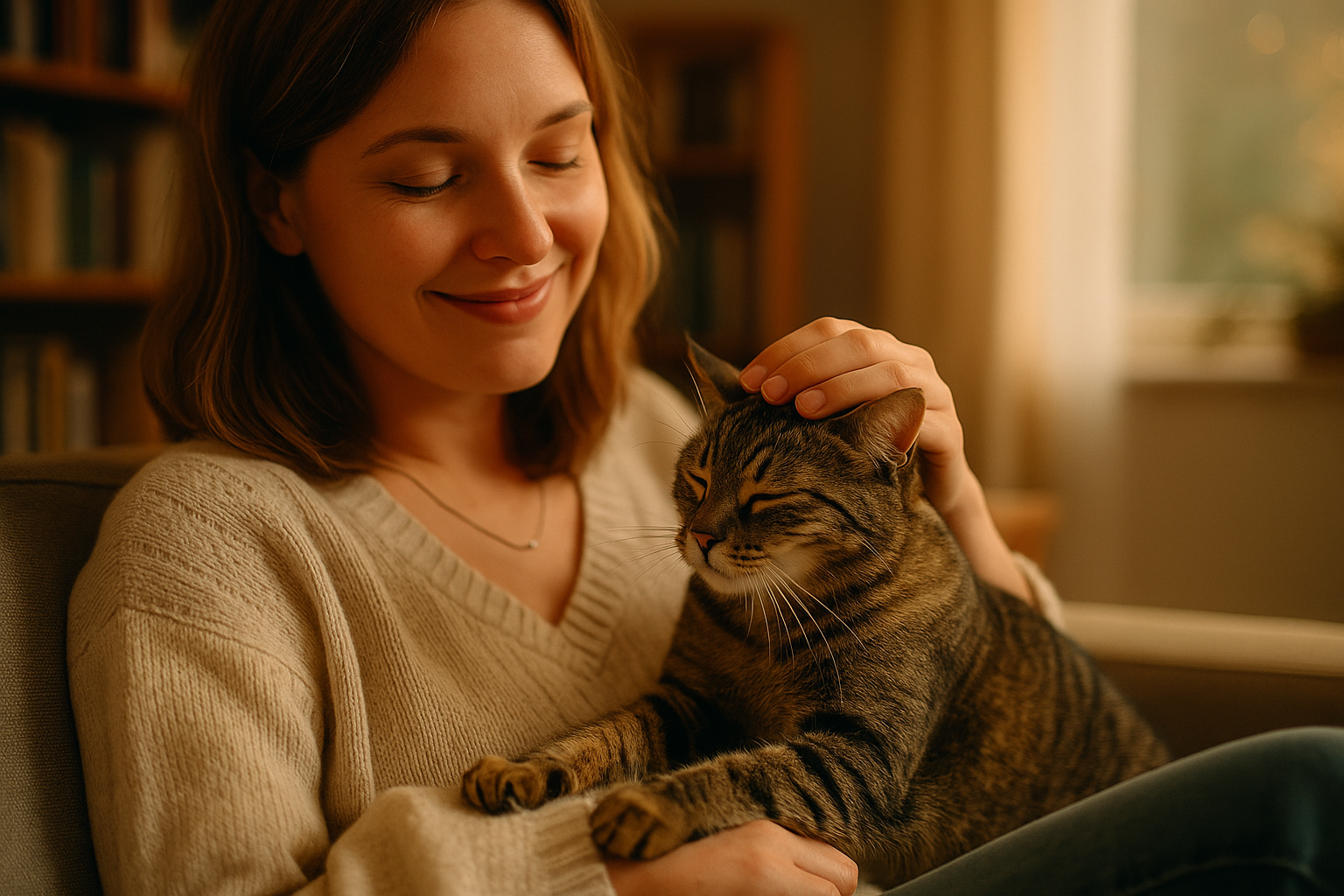The Science Behind Purring
Purring is one of the most charming sounds a cat can make, but have you ever wondered how they do it? Cats purr by vibrating their vocal cords as they breathe in and out, creating a soft, rhythmic hum. This unique ability starts when kittens are just a few days old, helping them communicate with their mother. At Friends With Tail, we love exploring cat communication to help you connect with your feline friend.
The purr originates in the brain, where a neural oscillator sends signals to the larynx muscles. Unlike meowing, which is directed at humans, purring is a versatile sound used in various situations. It’s not just about happiness—cats purr when they’re hungry, stressed, or healing. Understanding the science behind purring gives you a window into your cat’s emotions and needs, making it easier to respond to their signals.
Different Reasons Cats Purr
Cats purr for many reasons, and each purr can carry a different message. Here are the most common reasons behind this behavior:
- Contentment: The most familiar purr happens when your cat is relaxed, like when they’re curled up on your lap or basking in the sun. This purr signals they’re happy and comfortable.
- Hunger or Attention: Some cats purr when they want food or attention. This purr is often louder and combined with meows, like when they circle your legs at mealtime.
- Self-Soothing: Cats may purr to calm themselves in stressful situations, such as during a vet visit or after a loud noise. It’s their way of coping.
- Healing and Comfort: Purring may aid healing by producing vibrations (25–150 Hz) that promote tissue repair and reduce pain. Cats often purr when injured or recovering.
- Bonding: Mother cats purr to guide their kittens, and adult cats may purr to bond with you or other pets, showing trust and affection.
Listen to the tone and context of your cat’s purr to understand their mood. A soft, steady purr usually means contentment, while a more urgent purr might signal a need. Observing their body language, like relaxed ears or tense posture, adds clues to their message.
When Purring Indicates a Problem
While purring is often positive, it can sometimes signal a problem. Cats may purr when they’re in pain, sick, or anxious, using it to self-soothe. Here’s how to tell if purring is a concern:
- Changes in Behavior: If your cat purrs more than usual or seems withdrawn, it could indicate stress or illness. Look for signs like hiding or reduced appetite.
- Physical Symptoms: Check for limping, vomiting, or changes in litter box habits alongside purring. These may point to pain or health issues.
- Unusual Purring Patterns: A sudden increase in loud or persistent purring, especially during rest, might signal discomfort.
If you suspect a problem, consult your vet to rule out medical issues. Regular checkups help catch problems early, ensuring your cat stays healthy. Purring alone isn’t a diagnosis, but combined with other signs, it’s a clue to pay attention to.
Responding to Your Cat’s Purr
How you respond to your cat’s purr can strengthen your bond. Here’s how to engage with their purring:
- Offer Affection: If your cat purrs while being petted, continue gently. Mimic their calm energy with slow strokes or soft words.
- Meet Their Needs: A purr at mealtime might mean hunger. Check their food and water bowls or offer a treat if appropriate.
- Create a Safe Space: If they’re purring to self-soothe, provide a quiet spot with a cozy bed or blanket to help them relax.
- Observe Context: Pair their purr with body language. A relaxed cat with half-closed eyes is content, while a tense cat may need reassurance.
- Avoid Overstimulation: Some cats purr then suddenly swat if over-petted. Watch for signs like tail flicking and give them space if needed.
Responding thoughtfully shows your cat you understand them, building trust. For more feline behavior tips, visit Friends With Tail.
Fun Facts About Cat Purring
Purring is full of surprises! Here are some fun facts to deepen your appreciation:
- Not Just House Cats: Big cats like cheetahs and cougars purr, but lions and tigers can’t due to different vocal cord structures.
- Unique Frequencies: Purring vibrations may help cats heal bones and reduce stress, similar to therapeutic ultrasound in humans.
- Early Communication: Kittens purr within days of birth to signal their mother they’re okay and nursing well.
- Individual Purrs: Each cat’s purr is unique, like a fingerprint, varying in pitch and volume.
- Human Benefits: Purring can lower stress and blood pressure in humans, making it a win-win for you and your cat.
These facts highlight why purring is so special. Share your cat’s purring quirks in the comments to connect with other cat lovers!
Key Takeaways
Purring is a fascinating part of cat communication, revealing your cat’s emotions and needs. From contentment to self-soothing, each purr tells a story. By understanding the science, recognizing reasons, and responding thoughtfully, you can deepen your bond with your cat. Watch for signs of problems and enjoy the unique joy of your cat’s purr. Have a purring story or question? Drop it in the comments, or explore more resources to better understand your feline friend!

